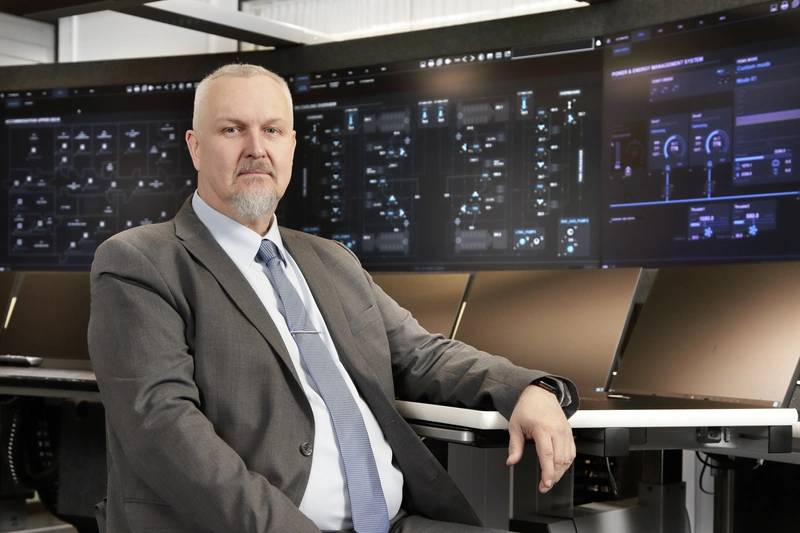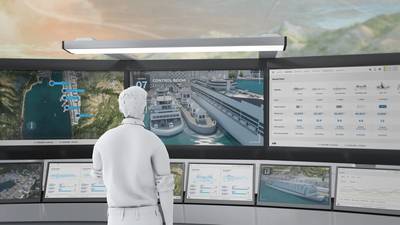OPINION: Seeing the Ship as a System Changes Everything
Shipping must engage with the decarbonization realities that lie ahead by changing the way it crafts maritime legislation to reflect its place in the interconnected, interdependent world economy, says Eero Lehtovaara, ABB Marine & Ports.
ABB Marine & Ports Head of Regulatory & Public Affairs, Eero Lehtovaara has carved out an unusual - and possibly unique - role in the maritime industry over recent years, as a ‘stakeholder’ simultaneously mindful of the perspectives of owners, seafarers, manufacturers and regulators.
A Master Mariner with corporate experience to add to his commercial seagoing knowhow, Lehtovaara acknowledges the critical role collaboration plays in meeting the shipping industry’s goal for net-zero greenhouse gas emissions by around 2050. He also believes maritime regulations need an overhaul, so that integrated digital technologies can make a full and decisive contribution.
“The industry is an ecosystem which includes owners, managers, mariners, shipyards, equipment makers, designers, research institutes and class societies: all of them are crucial,” says Lehtovaara. “Shipping is the most efficient way of transporting goods, whether considered tons per mile or emissions per ton-mile. However, assuming that a miracle is not going to happen, it must also become more efficient very quickly to meet the sustainability goals now set out for it.
“Rather than focusing on individual parts of the industry, or fractions of it, we should use a holistic approach to evaluate the gains that are available to the industry as whole.”
Regulators are fully aware that rapid advances in digital technology are changing the way ships are operated.
“The maritime education and training I had was comparable to what most seafarers out there are going through today, and it is not sufficient preparation for what's going on onboard ships at the moment,” says Lehtovaara.
 “The industry is an ecosystem which includes owners, managers, mariners, shipyards, equipment makers, designers, research institutes and class societies: all of them are crucial,” said Eero Lehtovaara, Head of Regulatory & Public Affairs, ABB Marine & Ports
“The industry is an ecosystem which includes owners, managers, mariners, shipyards, equipment makers, designers, research institutes and class societies: all of them are crucial,” said Eero Lehtovaara, Head of Regulatory & Public Affairs, ABB Marine & Ports
Issues of Separation
Today, ships are filled with standalone proprietary technologies. Two systems operating in storm conditions can base their analyses on different efficiency parameters, for example: a seafarer acting in full compliance with training requirements can find that one overrides the other in an unexpected way, compromising safety.
“In SOLAS*, every ship system is considered independently, while the way to evaluate integrated system is based on outcomes. SOLAS is also descriptive, which is not compatible with software. You can’t describe a code.”
The International Maritime Organization’s carbon intensity indicator (CII) and EU Emissions Trading Scheme are only early milestones on the regulatory route to net zero emissions from ships by around 2050. Already, the FuelEU Maritime Initiative favors ‘well-to-wake’ over ‘tank-to-wake’ as the measure for of the impact of ship greenhouse gas emissions, with IMO soon expected to follow.
With all levels of society increasingly reliant on digital technology, the progressive response from shipping is to engage more closely with solution providers on developing standards and regulations to help digitalization nurture decarbonization.
“I don't say that crews must be software engineers, but there is no going back: there has to be both a systematic approach to understanding digital systems and how they fit together across shipping, and to the vetting of the systems in service.”
Integrated for Sustainability
A member of technical committees with leading class societies, Lehtovaara started the International Council on Combustion Engines (CIMAC) Industry strategy Group Digitalization and, since the summer of 2024 has been a board member focusing on maritime digitalization. He is the current chair of One Sea - the association of autonomous ship technology frontrunners and he also chairs the Waterborne Technology Platform, which provides policy guidance to the European Commission on maritime R&D. With industry investments in zero-emission waterborne transport R&D per year for the period 2021 – 2030 amounting to €3.3 billion, the EU is adding €530 million through the Horizon Europe program.
In November-December 2023, Lehtovaara also represented the maritime industry as part of the Finnish delegation at COP28 in Dubai. His participation included a "Transition in Transportation" panel session covering how to reduce shipping’s carbon footprint and accelerate the commercialized scaling-up of solutions.
New energy saving devices, alternative fuels, carbon capture, batteries and fuel cell power will all provide critical pathways to maritime decarbonization, Lehtovaara stresses. “But there is not going to be one solution that meets every objective, given the diversity of ship types, ship ages, routes and services.”
What is also already known is that all the solutions proposed to advance maritime decarbonization – from CII to emissions trading – are optimized by formalizing solutions for data sharing. Lehtovaara says regulators should reconceive the ship as a system to reflect this reality.
“Perhaps this sounds like a small thing. It changes everything,” says Lehtovaara.
Understanding the ship as a system is a point of departure for regulating the interface between the human in the loop and digitalized maritime technology.
Technology as Tool
“Technology should be helping to make the lives of seafarers easier, as well as making ships operate more efficiently. But the advisory products which support better decision-making aren’t governed by specific rules or third-party approvals that examine how they affect the ship as system.”
Lehtovaara says the model for data collaboration between engine and other systems would include an outline of standards for secure data exchange, vendor neutrality and data property protection. The work would also demand a review of SOLAS formulations for the design, planning and testing of ships, and a regulatory framework which takes account of the ‘graceful deterioration’ of electronic systems.
The ‘ship as system’ approach would be influential if considered as part of the IMO’s review of its formulation of the CII, or as EU standards evolve to support FuelEU maritime requirements to have 90 percent of pier sides in ports to deliver power from shore by 2030, Lehtovaara suggests.
“As [IMO Secretary General] Arsenio Dominguez said recently, regulators have come to realize that that they were optimistic with the CII. Its impact so far has been to cut the average speed of the fleet by almost one knot. This means ships in service are less efficient and, globally, it’s been the same as reducing ship capacity substantially.
“One response might be to build more ships, but even a shameless opportunist would acknowledge that this defeats the entire objective of the CII regulation.”
A better response would involve improving understanding of the relationships of the world’s population, GDP and trade, and the global shipping industry needed to support them. Where shipping’s contribution to ‘carbon intensity’ is concerned, this would need to include restraint on any haste to reform CII until a better understanding of the impact of changing vessel speeds is established.
* International Convention for the Safety of Life at Sea (SOLAS) - the international maritime treaty that sets minimum safety standards in the construction, equipment and operation of merchant ships.













